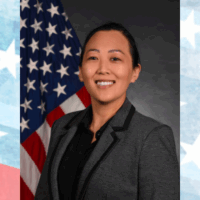
Sam Cousins is a senior associate at ACAMS, where his work includes supporting public-private partnerships and strengthening ACAMS’ thought leadership pillar through the development of content on sanctions and risk—particularly sanctions webinars and the ACAMS Global AFC Threats Report. Cousins’ work also focuses on countering ransomware financing, which includes enhancing industry awareness of the anti-financial crime (AFC) risks associated with ransomware attacks and supporting the mitigation of those risks through policies, training and public-private dialogue.
Prior to ACAMS, Cousins worked on the Sanctions Policy team at UK Finance, the trade association for the U.K. banking sector. He holds the Certified Global Sanctions Specialist (CGSS) certification from ACAMS.
ACAMS Today (AT): What is the Global Threats Report survey, and how will its input be used in the next report (to be issued in 2026)?
Samuel Cousins (SC): The survey is a short, 10- to 15-minute anonymous questionnaire, which we have issued in partnership with the independent research organization YouGov, to gain as comprehensive an understanding as we can of perceptions surrounding financial crime risks and threats.
This is the third consecutive year we have run this survey, and the results create an enormous amount of data for us. Last year, we had about 185,000 data points. What we then do is highlight the results as a quantitative part of our Global AFC Threats Report, providing a whole raft of graphs and charts showing the breakdowns of responses, including segmentation for how these perceptions differ by geography, seniority, line of defense and more.
AT: What are some of the key focus areas and questions included in the survey?
SC: It’s always a challenge to decide on the final survey questions. We have to balance between depth and brevity. If the survey is too long, no one will complete it! But at the same time, we want to make sure that the questions we ask will be able to provide some truly interesting insights. On top of that, we try to keep questions in year-on-year, so that we can increasingly implement a look-back analysis that shows how perceptions may have changed (or not) over the years.
Examples of some of the focus areas include: where the community expects regulation change, where they see the biggest risks to financial crime functions over the next two years, the greatest internal risks to their institutions and which areas of financial crime they’re most focused upon. We also have deep-dive questions focused on fraud, artificial intelligence and environmental crime.
AT: Why is it important that members of the global AFC community take the survey?
SC: Simply put, the more responses we have, the more reliable and valid the results are. This is a global survey, and we want to make it truly representative of global views. We put an emphasis in the analysis to break things down regionally, to give a greater understanding of how priorities, concerns and threats might vary regionally. You can read this in the main report, but also in more depth in our follow-on regional trends and perspectives publication. The more responses we have, the more we can dive into the detail—and we want to ensure that members of the ACAMS community from all across the world can have their perspective represented.
We’re fortunate that hundreds of members of the global ACAMS and AFC community have already taken part in this year’s survey—but we would always encourage more responses. So, if you’re reading this, and you haven’t filled it out—please do! And send it to your colleagues as well.
AT: What are some of the key insights from last year’s survey?
SC: It’s always hard to pick specific things out from over 80 pages of analysis (across the main report and our follow-on regional breakdown report), but I’ll pull out a couple of things I found most interesting.
Anti-money laundering remained the area of regulations where respondents most anticipated change and/or reform, followed by cybersecurity regulations. Furthermore, scams and fraud against individuals, sanctions evasion and cyber-enabled crime were the three areas where respondents stated their financial crime programs were most focused.
We also asked about artificial intelligence (AI) adoption in financial crime controls, and just under half of respondents were piloting AI or using it as a primary or secondary tool in their AFC functions, with respondents in Asia far more likely to do so than those in other jurisdictions (and respondents in the U.S. being among the lowest).
Also, some of the shifts and patterns compared to our 2024 report data were quite interesting. For example, the risk perception across a whole number of internal risks increased—respondents were more likely to consider outdated IT, lack of training and lack of culture as being high-risk to their programs. Furthermore, the malicious use of generative AI—already the top risk in our 2024 report, grew even more in our 2025 data.
Even where results may not be surprising, having data that shows which things are changing but also which aren’t, is the entire purpose of this research—to back up observations (even ones we might consider to be obvious or intuitive) with rigorously scrutinized and carefully collected data.
AT: What is the deadline for submitting this year’s survey?
SC: This year’s survey is scheduled to close at the end of the day, Monday, October 20. The link is here: https://start.yougov.com/refer/vJ9HrGh6xxfnRP. Responses are fully anonymized, and research is collected by the independent research agency YouGov. Thank you to anyone and everyone who answers it!
Interviewed by: ACAMS Today editorial, ACAMS, editor@acams.org










